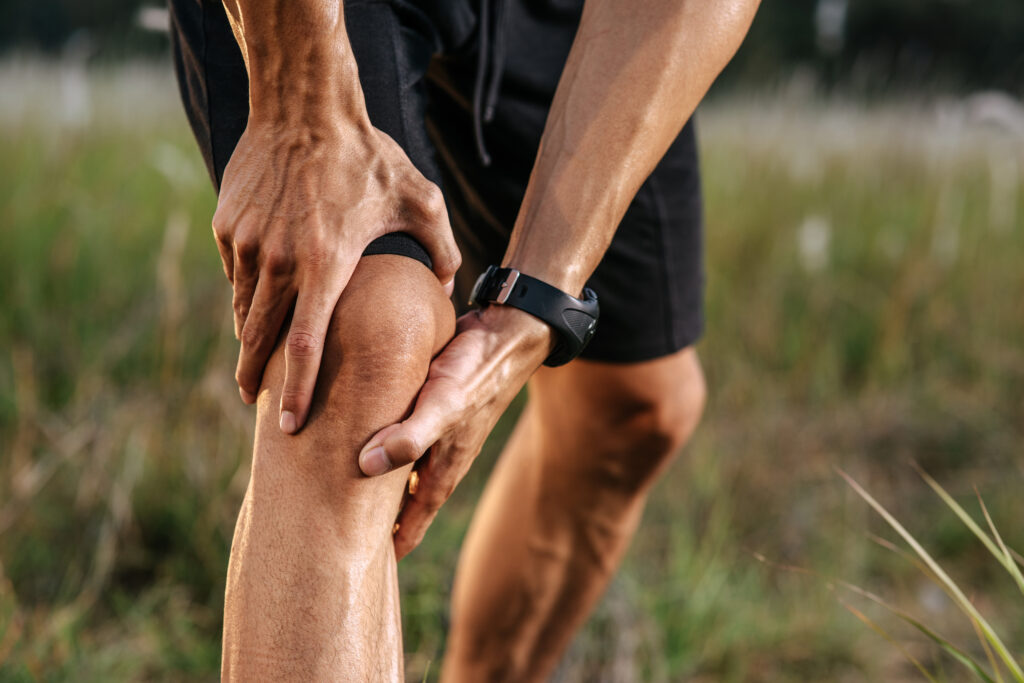When you're dealing with a sports injury in Lexington, understanding the top steps for recovery can make all the difference. You need to prioritize rest to let your body heal, but that's just the beginning. Seeking a professional assessment guarantees you get the right treatment tailored to your specific needs. From there, implementing a structured rehabilitation plan is vital, but many overlook the importance of local therapy options. If you're enthusiastic to know how to safely return to your activities without setbacks, keep following along to discover the essential steps you shouldn't ignore.
Prioritize Rest and Recovery
When you suffer a sports injury, prioritizing rest and recovery is crucial for a successful comeback. Your body needs time to heal, and pushing through pain can lead to further damage.
Start by giving yourself permission to take a break. Step away from your sport and any activities that exacerbate your injury. This doesn't mean you should become completely inactive; instead, focus on gentle movements or alternative exercises that don't strain the injured area.
Listen to your body. If you feel pain, it's a sign to slow down. Ice the injury to reduce swelling, and elevate the affected area whenever possible.
Make sure you're also getting enough sleep; it's during sleep that your body does much of its healing. Incorporate a balanced diet rich in nutrients to support recovery—think lean proteins, whole grains, and plenty of fruits and vegetables.
Stay hydrated, too. Drinking enough water helps maintain ideal bodily functions and can aid in the recovery process.
While resting, consider using this time to mentally engage with your sport. Watch games, study techniques, or even meditate on your goals to keep your passion alive.
Finally, set realistic expectations. Recovery takes time, and rushing the process could set you back. By prioritizing rest and recovery now, you're laying the groundwork for a stronger, healthier return to your sport.
Embrace this phase as an essential part of your athletic journey.
Seek Professional Assessment
After experiencing a sports injury, seeking professional assessment is essential for understanding the extent of your damage and determining the right course of action.
You might be tempted to self-diagnose or hop back into your routine, but this can lead to further complications. A professional evaluation gives you insight into your injury and helps you avoid long-term issues.
Here are four key reasons why you should prioritize a professional assessment:
- Accurate Diagnosis: A healthcare professional can provide an accurate diagnosis using their expertise, ensuring you understand the specific nature of your injury.
- Customized Treatment Plan: Based on their assessment, a professional can design a tailored treatment plan that meets your unique needs, increasing your chances of a full recovery.
- Preventing Future Injuries: Understanding the underlying causes of your injury can help you make necessary adjustments to your training or playing style. A professional can guide you in preventing similar injuries down the line.
- Access to Advanced Techniques: Professionals often have access to advanced diagnostic tools and treatment options that aren't available to the average person.
This can include imaging tests or specialized therapies that can expedite your recovery.
Implement a Rehabilitation Plan
Implementing a rehabilitation plan is essential for regaining strength and mobility following your injury. Once you've consulted with a healthcare professional, it's time to put a structured plan into action. Start by setting specific, measurable goals based on your injury and current condition. This will help you stay focused and motivated throughout the recovery process.
Incorporate a mix of exercises designed to strengthen the affected area while improving flexibility and range of motion. These exercises should gradually increase in intensity, ensuring you challenge your body without risking further injury. It's vital to listen to your body; if something doesn't feel right, don't hesitate to modify your routine or consult your healthcare provider.
Consistency is key. Aim to stick to your rehabilitation schedule, dedicating time each day to practice your exercises. Keeping a journal can help you track your progress, which can boost your motivation and allow you to celebrate small victories along the way.
Don't forget the importance of rest and recovery. Your body needs time to heal, so make sure to include rest days in your plan. Staying hydrated and maintaining a balanced diet will also support your recovery efforts.
Lastly, stay positive throughout this journey. Recovery takes time, and setbacks may occur, but with a solid rehabilitation plan in place, you'll be on your way to returning to your favorite activities stronger than ever.
Utilize Local Therapy Options
Exploring local therapy options can greatly enhance your recovery process. When you're dealing with a sports injury, it's crucial to tap into the resources available right in your community.
Not only can local therapy options provide you with specialized care, but they can also save you time and keep you connected to your support network.
Here are four local therapy options to evaluate:
- Physical Therapy Clinics: Local clinics often employ trained professionals who specialize in sports injuries. They'll tailor a rehabilitation program that fits your specific needs.
- Chiropractic Care: Chiropractors can help with pain relief and mobility through adjustments. Many in Lexington have experience treating athletes and can offer insights into your recovery.
- Massage Therapy: Therapeutic massage can reduce muscle tension and improve circulation. Look for therapists who focus on sports massage to get the best results.
- Acupuncture: This holistic approach can alleviate pain and promote healing. Many local practitioners are trained in sports acupuncture, which can be beneficial for your specific injury.
Gradually Return to Activity
How do you know when it's safe to return to your sports activities after an injury? The key is to listen to your body and follow a structured approach. Start by consulting with your healthcare provider or physical therapist. They'll assess your recovery and help you set realistic goals.
Once you get the green light, begin by incorporating low-impact activities into your routine. Activities like walking, swimming, or cycling can help you maintain fitness without exacerbating your injury. Pay attention to how your body responds during and after these activities. If you feel pain or discomfort, it's a sign to scale back and give yourself more time to heal.
After a week or two of low-impact activity, gradually reintroduce your sport. Start with short, controlled sessions that focus on technique rather than intensity. For instance, if you're a runner, consider jogging for a few minutes, then walking to recover. This method allows your body to adjust and minimizes the risk of re-injury.
Monitor your progress closely. Keep a journal to track how your body feels during each session. If you experience any setbacks, don't hesitate to revisit your therapist for advice.
Conclusion
In conclusion, recovering from a sports injury in Lexington takes focus and commitment. By prioritizing rest, seeking a professional assessment, and following a structured rehabilitation plan, you set the stage for effective healing. Don't forget to explore local therapy options for added support, and when you're ready, gradually ease back into activity. Keep monitoring your progress to guarantee a safe return to the sports you love. You've got this—take it one step at a time!



